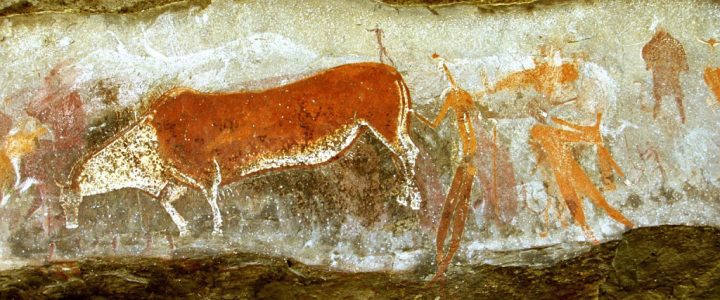
What makes the Drakensberg so special?
The Drakensberg mountain range falls within the greater Maloti-Drakensberg World Heritage Site, one of the largest and most commercially inaccessible conservation areas in South Africa, filled with gorges, cliffs that rise towards the heavens, beautiful valleys, and, of course, numerous sandstone caves. Wildlife in the area includes rhino, wildebeest, and various grazers, while the impressive list of plant species features many rare and endemic species.

Prep properly for a night in a cave
There are literally scores of overnight caves to choose from in the Drakensberg, and they vary in size and views. While many must be booked in advance, some operate on a first come, first served basis, but these are generally smaller and further off the beaten track. To reach any of the caves requires a hike, and don’t expect any housekeeping services. Do, however, be equipped with all the necessary camping gear you will need for your stay, as well as enough food and water.

It’s also a good idea to familiarize yourself with cave camping etiquette. Luckily, this list is not too complicated, with the bottom line being to leave nothing but your footprints behind. Campers are expected to remove all their litter, except that which is biodegradable and can be buried. Human waste should also be left well under the ground (note to pack a small shovel!) and the lighting of fires is prohibited. Besides the obvious danger of starting a bush blaze, fires smoke out caves and coat their walls with soot, making them uninhabitable for the many little creatures that live in their crevices.

There are also many caves within the Drakensberg area that house ancient San rock art. Camping is forbidden in these.
You’ve got options
One of the most popular and easiest to reach overnight caves in the Drakensberg is Sherman’s Cave. The path begins just below the Cathedral Peak Hotel leading across the river and up the steep slopes towards a peak of the same name. Pass a lovely wooded gorge with a natural pool. Within about two hours you will have reached your overnight accommodation, where you can sleep like a baby, wrapped in the arms of the Earth. The deep cave has a low overhang that easily sleeps 10 hikers, as most of the floor is level. The roof is low, so be prepared to stoop, but the views of the surrounding mountain scenery are spectacular.

Further hiking and accommodation information is available from Drakensberg Hikes, a comprehensive resource guide to all the caves in the Drakensberg.
Unexpected luxury under a rock
If you’re not the kind that can get comfy on a camping mattress, but still want to experience sleeping in a cave in luxury, then do consider Antbear Lodge, with a gorgeous accommodation unit built under a rock. Glass doors open onto a wooden deck with hammock chairs and a spectacular view of the Drakensberg mountains, while inside the cave is cozy and decadent, with a spa bath, a fireplace, and even rock art painted on its walls.

The lodge supports sustainable and responsible tourism, with meals being made from organic ingredients and cooked from scratch. The artistic and inspiring furnishings were all handmade at the lodge itself. This is the ultimate in luxury caveman living, where you can spoil yourself with a private candle-lit dining experience, on the deck of your cave under the stars.



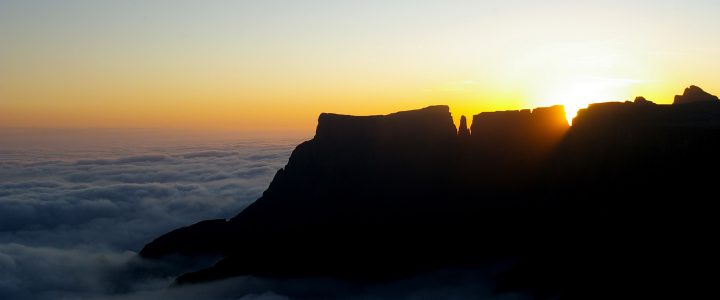
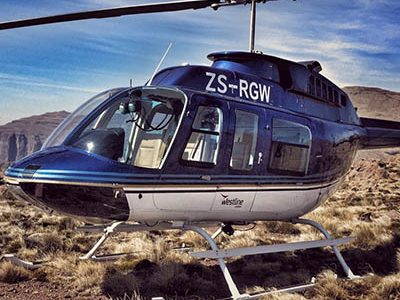









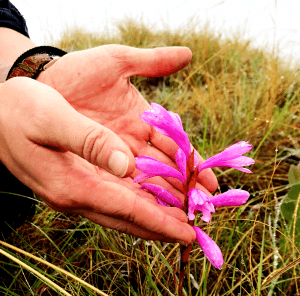
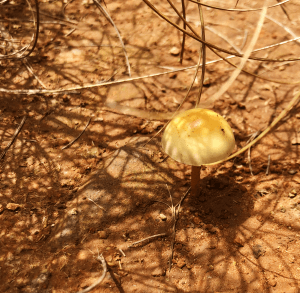
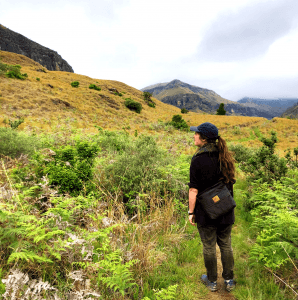
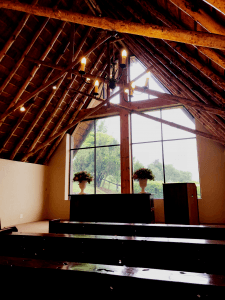
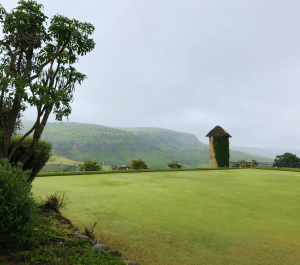
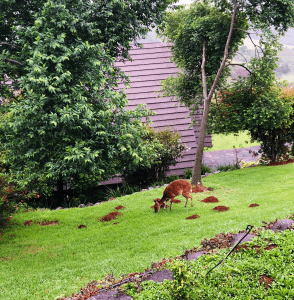


 One of the most impressive cliff faces on earth, this towering line of precipitous cliffs runs over 5km, at more 1 000 metres (3200 ft) high. This makes it 10 times the size of El Capitan’s most famous face in Yosemite in the USA. Just to see it is awe-inspiring.
One of the most impressive cliff faces on earth, this towering line of precipitous cliffs runs over 5km, at more 1 000 metres (3200 ft) high. This makes it 10 times the size of El Capitan’s most famous face in Yosemite in the USA. Just to see it is awe-inspiring. Many rate this as the best hike in KwaZulu Natal – a trek through The Royal Natal Park to the Tugela Falls, which plunges over 948 metres (3,100 ft) from the Amphitheatre’s clifftops. The hike is 3 hours up to the point where you look up at the falls and 2 then hours down, along pathways lined with ferns and wild flowers, passing through patches of yellowwood forest. It’s really not too strenuous, but take plenty of water as much of the way you’re hiking above the river.
Many rate this as the best hike in KwaZulu Natal – a trek through The Royal Natal Park to the Tugela Falls, which plunges over 948 metres (3,100 ft) from the Amphitheatre’s clifftops. The hike is 3 hours up to the point where you look up at the falls and 2 then hours down, along pathways lined with ferns and wild flowers, passing through patches of yellowwood forest. It’s really not too strenuous, but take plenty of water as much of the way you’re hiking above the river. Bushman or San people have left behind delicate galleries of their art in caves all over the ‘Berg. A short guided tour to a cave in the Royal Natal Park can be booked – call ahead to confirm the time. You’ll get a spectacular view of the Amphitheater from the path.
Bushman or San people have left behind delicate galleries of their art in caves all over the ‘Berg. A short guided tour to a cave in the Royal Natal Park can be booked – call ahead to confirm the time. You’ll get a spectacular view of the Amphitheater from the path. Pack lunch & take an easy stroll from the car park in the Royal Natal Park to this series of cascading falls, with trees around for shade and comfy rock formations to lounge around on in the sun. The water’s perfect for drinking and there are several pools for swimming.
Pack lunch & take an easy stroll from the car park in the Royal Natal Park to this series of cascading falls, with trees around for shade and comfy rock formations to lounge around on in the sun. The water’s perfect for drinking and there are several pools for swimming. All Out Adventures has an amazing collection of equipment in a clearing in a forest near Montusi Mountain Lodge and The Cavern Resort & Spa, offering cable tours, paintball, quad biking, bungee bounce, zip line, king swing and flying trapeze – if you’re into this mad stuff, you’ll be entertained for hours. If not, they do good very good cake and coffee, so it’s still worth checking out.
All Out Adventures has an amazing collection of equipment in a clearing in a forest near Montusi Mountain Lodge and The Cavern Resort & Spa, offering cable tours, paintball, quad biking, bungee bounce, zip line, king swing and flying trapeze – if you’re into this mad stuff, you’ll be entertained for hours. If not, they do good very good cake and coffee, so it’s still worth checking out.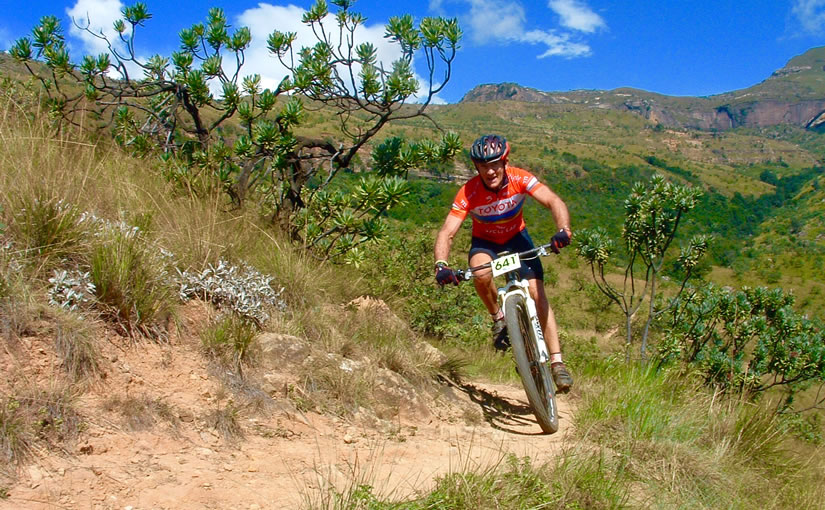
 From Joburg, take the N3 highway for 2.5 hours to Harrismith and turn right – and the scenery begins, with a beautiful drive past the Sterkfontein Dam (the R74 is now in great condition) and down the Oliviershoek Pass. From Durban it’s an even easier drive, via Bergville.
From Joburg, take the N3 highway for 2.5 hours to Harrismith and turn right – and the scenery begins, with a beautiful drive past the Sterkfontein Dam (the R74 is now in great condition) and down the Oliviershoek Pass. From Durban it’s an even easier drive, via Bergville.
